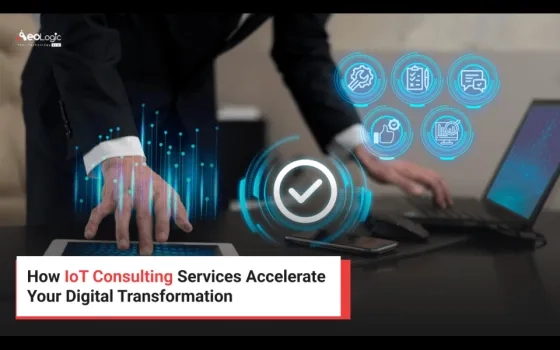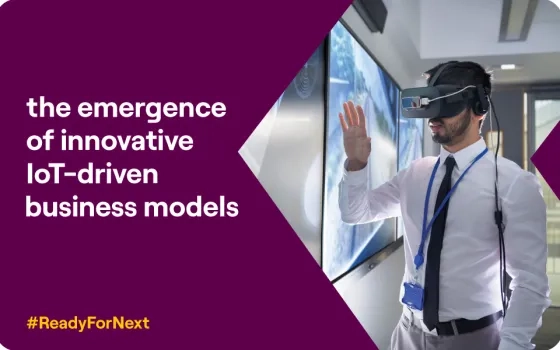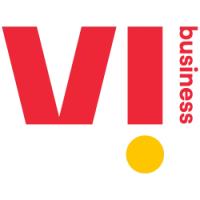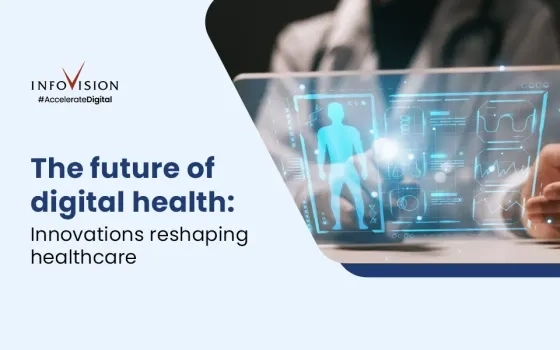With the anvil of cheaper memory and computing power, many technologies that were earlier constrained by economic viability have now become popular. The data transmission capability of internet as well as availability of high power cloud computing have provided an alternative to many functions that could not be utilised due to high costs.
Various digital technologies have transformed the way the world used to conduct business, perhaps impacting our lives in a positive way. Though the word Industry 4.0 was coined about eight years ago in 2011, adoption of new technologies in conventional manufacturing sector, which still is “The Industry” has not progressed at the same rate as of new age businesses or even supporting services. While this was a fact in overseas markets, the scenario in India too followed the way of the world despite all the hype around the IoT – Internet of Things.. In some ways, this reminds us of the similar hype around Y2K. It is however, imperative to remember that despite being a hoax, Y2K pushed India into the global technological business arena, from where India has progressed to reach new heights.
IoT for manufacturing would extend the controlling capabilities of conventional control systems, be it DCS or PLC or a CNC. But, as such, existing control system controls all processes and equipment in an effective manner. What is it that IoT does provide over and above the conventional control system?
The answer is after the addition of various new control strategies to its repository, properly tuned/applied control systems are “The Best” for instantaneous control. They take care of continuous process control and discreet control like shutdown and start-up. However, they cannot control chronological problems that take place at regular intervals and neither provide insights as to why they happen. When faced with a new abnormality, all DCS can do is to ensure safe shutdown of the plant. To observe the response of the process over a range of varying conditions, data of various sporadic deviations is needed, making a case to have a statistical process control system. Whether to control the process over a range of varying conditions or comparing the actual process with a model to derive recommended actions, the data handling capacity needed is enormous. In the past, only few industries involving highly critical processes could adopt statistical process control, adaptive control to the manufacturing process as the loss due to production destabilization or safety hazard outweighed the cost factor.
What changed now?
Cost of data transmission, storage and computing power have reduced drastically over the last two decades. Add to these, sensors with Wi-Fi/Bluetooth capability have eliminated cabling costs. Process/Equipment data can now be transmitted to these servers and hitherto missing capability to analyse the process is now available. To avoid permanent initial costs, one can even move to cloud, where superior computing power is now available with a range of analytical capabilities.
So far, so good. This is the beautiful picture that is presented by everyone – and they are not wrong. Still, despite many claims that the digital business would be growing manifold in the coming decades, none spoke about how the industry, from where these digital technologies have originally evolved, was left behind.
The objective here is to analyse and find out how to improve this situation.
Let us list the reasons.
1. Domain Capability of Technology Suppliers
2. Condition of Plant Equipment
3. Sensors
4. Users
Domain Capability of Technology Suppliers
Perhaps, it is better to take an analogy from the field of medicine for a better understanding of the issue. There is a difference between visiting the pharmacist at the corner and a doctor. Pharmacists are allowed to offer over the counter medicines but are not allowed to prescribe. The reason is they are experts in medicines but not in human anatomy. It is the doctor’s job to diagnose and prescribe proper medicine. To a larger extent, Indian technology service providers function more like pharmacists than doctors.
Unlike in the West, where the fulcrum of modern industry has originated and evolved, technology suppliers in India do not have the capability to understand the manufacturing process or equipment i.e., not at the same level. Technology Suppliers in India are very good in making plants run at their best condition allowed by existing control systems. Inferring past data and providing insights is something that needs a greater domain expertise. Though big names in Automation industry are subsidiaries of Western nations, their staff lack the kind of exposure to the “domain” their western counterparts have. Reason being the technology is developed in the West where most of equipment manufacturers and process technology suppliers have a long-term ties with the local Automation Company. By being continuously involved in the development of a new process/equipment technology, the automation engineer in Europe or in USA knows the process and equipment almost like the process/equipment designer – and their number is high.
As the crucial part of IoT is how one infers the data, lack of domain expertise reduces the solution to just a dashboard and alerts which normally give 5-15% of possible gains. Except for being a real time and having a reach to many, this has no value over the existing control system and is rendered to be a costly replication. Of course, using the alerts and the dashboard in an administrative manner ensures the plant operating personnel be vigilant so the disturbances reduces increasing overall efficiency. Still, this is not the ideal solution one looks for, from IoT.
However, IoT Suppliers can overcome this problem simply by recruiting domain experts to help during implementation period. Alternately, they can even tie up with equipment manufacturers but this would be impractical in the long run given individual interests.
There can be another option of a new start-up that can wire up the plant and use a platform and start analysing the data. They can even associate with few domain experts and may provide cheaper solutions. In fact, most of the successful stories have come from this segment only. However, this start-up model too is costlier for MSMEs and their unreliable future is a concern for heavy industry.
Condition of Plant Equipment
So, what is the point of having a prescription when one knows what ails him? Having insights from data analysis may not have any impact if the plant’s equipment is not in condition and needs an overhauling or upgrade. Revamping the plant is not a decision taken based on technical insights but on business viability, future etc. In such cases too, data analysis can help to derive some advantage by means of changing operational practices, predicting periodical disturbances so as to eliminate them. Still, only the business can take a decision on the returns due to IoT implementation.
In other cases, even if the plant is in good condition, its control system might be obsolete and needs to be upgraded before it can transmit data to external servers. And, upgrading control system may not be a cheaper affair. Sometimes, OPC server that is needed to facilitate data transfer may be costlier than the solution offered by a start-up to connect the plant to cloud. But, if the plant is in good condition, in most cases, it would be better to for a control system upgrade and IoT. Perhaps, this would be the fittest of the cases for IoT implementation.
On the other hand, newer plants with latest control systems may feel they are running at optimum levels and no significant benefit may be achieved by going to IoT. Here, the reality may be different.
Irrespective of the age of the plant, barring few cases IoT would provide tremendous advantage to the plant in improves its reliability and efficiency.
Sensors
The least spoken but most critical factor in the success of any IoT project is – Sensors. While the new age claims may be talking of many “IoT Sensors” that would be transmit data of the equipment condition, engineers knew that there is nothing called IoT sensor but a sensor with communication capability. Of course, one may not be wrong in calling newly developed sensors that could measure more than one parameter IoT sensors.
However, consider the news that we hear about many IoT sensors providing information. This scenario simply don’t exist in the real industrial world. Sensors used in the industry need to adhere to the industrial environment makes them so costly that only those parameters used to control the process or crucial for equipment conditions are measured. While it takes many good engineers to select appropriate sensors for a particular application, generic sensors can also be used for IoT (as these sensors will not be used to control the process). Though there are some generic ones like motor monitor sensors, very few of them are really robust and can withstand industrial environment. While it was a standard industrial practice to monitor health of critical equipment such as big turbines, pumps and motors, new sensors may come in handy to monitor not so big or crucial equipment if the cost is good. However, the cost of sensors, cloud and connectivity makes it difficult for a plant that is maintained per standards. One shall remember that there are no substitutes for good operational and maintenance practices. If a plant is having chronicle problems, going for IoT would definitely help improve its reliability.
However, when we talk about good plants, after IoT implementation, one may find out that the data is not sufficient to conduct any meaningful analysis. Post implementation costs, such revelation would cause much distress and will jeopardise any further attempts at trying new technologies. Such surprises may be avoided if one does a proper assessment of the plant, its condition, data points and their sufficiency to provide insights before implementation. Having realistic expectations from IoT projects is better than expecting miracles after investment. A data sufficiency assessment may be carried out by a domain expert and the need to add further sensors to improve data quality may be decided before the implementation.
Users
Industry is no exception to having huge expectations, just like other Indians. And, they are highly vulnerable for the marketing promises that may or may not deliver goods when the time come. Despite knowing a tractor cannot be transformed into a car just by incorporating all Digital technologies available in the world, hoping their case can be the exception to the norm, much of Indian industry tries to follow their western counterparts. Maybe the plant was running at a lower efficiency and the management hopes – no, believes genuinely that a Digital solution may be the last chance of revival. On the other hand one may be adventurous enough to try a new thing with the spare cash when the going is smooth. After all, spending on latest Digital technologies creates a positive image in the minds of investors and customers as well – and it is affordable. But, will it really give tangible benefits is a million dollar question.
The primary reason for any IoT implementation to not achieve tangible benefits was the User who has not done proper technical evaluation. The same engineers who try to check technology, its suitability to the process while even buying spares, do force themselves to believe vendors and take their words at face value. Of course, proven track record is something one cannot check while dealing with a new start-up that offered a solution, but checking whether the solution is feasible and suitable to the process should never have been left out.
Users, being users play the most crucial role to the success of IoT implementation. They need to work long before even the implementation started and continue to work long after the implementation to realise the benefits from the implementation to the maximum. So, it is good to analyse the functions of the user which defines the implementation itself.
Pre-Implementation activities:
1. Understand the plant and where it stands amongst its peers.
2. Study the proposed solution and list out deliverables.
3. Check and ensure whether plant control systems are capable to transmit data to the IoT platform. If not, this shall be tackled at first. Sometimes people tend to leave out few critical systems because of the upgrade cost. This reduces the implementation cost of IoT but reduces its effectiveness even more. Even manual entry of such critical data is of no use as manual data never will contain data during contingencies.
4. List out responsibilities of the User and make everything ready beforehand. This includes mapping out tags in control system with addresses.
5. Finalise the formulae for all calculations that are part of deliverables.
6. Finalise Alert levels for tags
7. Prepare the list of numbers and email IDs to which alerts would be sent
8. Judge whether the platform would be cloud based or stores data locally. Check specifications of local interface servers even if cloud based solution is considered
9. Get the server configuration evaluated so as to be sufficient to analyse huge data the plant will provide later.
10. Evaluation of Network Security and consider sufficient preventive measures so the plant’s computers connected to control systems are not vulnerable to hacking attempts.
11. Check the local network capacity and upgrade if necessary.
12. If the IoT platform would be giving commands/instructions to the local control systems, it shall be only on local control system network. Dashboard and alerts to users may be sent through another server that is isolated from the control system network.
13. Identify the implementation team with clear responsibilities
14. Involve the user team in defining all formulae and approve deliverables.
15. If there is an existing installation of solution, better visit to have clarity in what can be expected from the solution.
16. Finally, check the sufficiency of the data that is generated. If more data is needed, consider new sensors and connecting them to the network. Plan this expansion so as to complete before the IoT platform goes live noting this expansion has a high lead time and sometimes may need plant shutdown.
17. Compare the plant’s process with recent installations to identify what new data points are now connected to the control system. Visiting one such installation be good. However, after the visit, one shall make an unbiased evaluation of what data can be added to the existing plant. Many times, in production oriented machinery, it may not be possible to install new sensors. In such cases, one may check for alternate way of acquiring the data through external mounted sensors. One option may be developing smart sensors by using mathematical models after the implementation.
18. For bigger plants, training on platform configuration may be included in the scope so as to reduce dependency on the vendor post implementation.
During Implementation
1. Have a daily check of what’s done and what’s not. Get the pending work done on the next day so nothing moves to next week.
2. Using vendor manpower in a highly productive way is of utmost importance as this is what drives vendor’s project cost. Wasting vendor’s human resources would increase costs exponentially.
3. Monitor the progress not in terms of onsite manpower but in terms of actual work completed.
4. Test the platform and formulae extensively.
5. Better give sufficient time for implementation rather than forcing the vendor to work in haste that would only lead more issues during commissioning. Remember that the plant didn’t have an IoT platform so far and you can afford to run it same way for few more weeks.
Post Implementation
1. A routine may be established to review the alerts and KPIs on daily, weekly and monthly basis.
2. If the pattern recognition and alerts for identifying instances are not part of the solution, periodic analysis of the data to be scheduled with respect to identified critical issues.
3. The responsibility of Data Analysis may be entrusted to either in-house or external analyst. However, the interpretations of the analysis shall be done by the analyst and a subject expert from the plant together.
4. Many organisations tend to evaluate gains from the implementation of IoT within months after implementation. Though sometimes there can be apparent gains, this may not be the case always. One reason is now everyone knows that someone is monitoring the plant – and so are extra vigilant and improving the reliability and efficiency by doing so. Even otherwise, it would be better to check after three years to compare past data with the data of that time. Why? If some insights provided by the data analysis indicate to replace/upgrade an equipment that may take some time, the benefits can only be visible after the replacement/upgrade. Though the benefits of replacement/upgrade are direct results of the action itself, credit is due to IoT for identifying them.
5. Most of platforms identify deviations from the regular pattern to identify abnormalities irrespective of design capabilities of those equipment. In such cases, feeding design data into the platform and comparing it with present data would help to identify actual scope for improvement.
Conclusion
Like all engineering efforts sticking to fundamental design/procurement/project procedures would reduce chances of failure of IoT implementation. The key to successful implementation doesn’t depend on how great an IoT platform is or how good the plant is, but purely on suitability of the deliverables to the plant’s need. Implementing IoT without any hype and treating it as any other capex project would certainly improve chances of successful implementation.
Disclaimer: While some people say Data is oil, some experts say it is not. Both are correct and both are wrong. Data is the oil, only if one knows how to extract it and refine it and know where to use – profitably. Otherwise, it remains just like the sludge below the earth
This piece has been authored by Rama Krishna Prasad, who leads digital initiatives at one of India’s largest industrial groups, as part of TechVoice – a weekly showcase of the leading voices of the industry sharing valuable insights on latest trends. Write to sindhuja@nasscom.in to get featured.
NASSCOM Center of Excellence is the largest collaborative platform for innovation & enabling co-creation across major verticals such as healthcare, automation, Industry 4.0, smart cities, agriculture, education, retail and many others. Partner with NASSCOM CoE today if you want to leapfrog the innovation curve. Write to co-innovate@nasscom.in.
For more updates, follow NASSCOM CoE IoT-DSAI on LinkedIn, Twitter, Facebook, and Youtube.

















